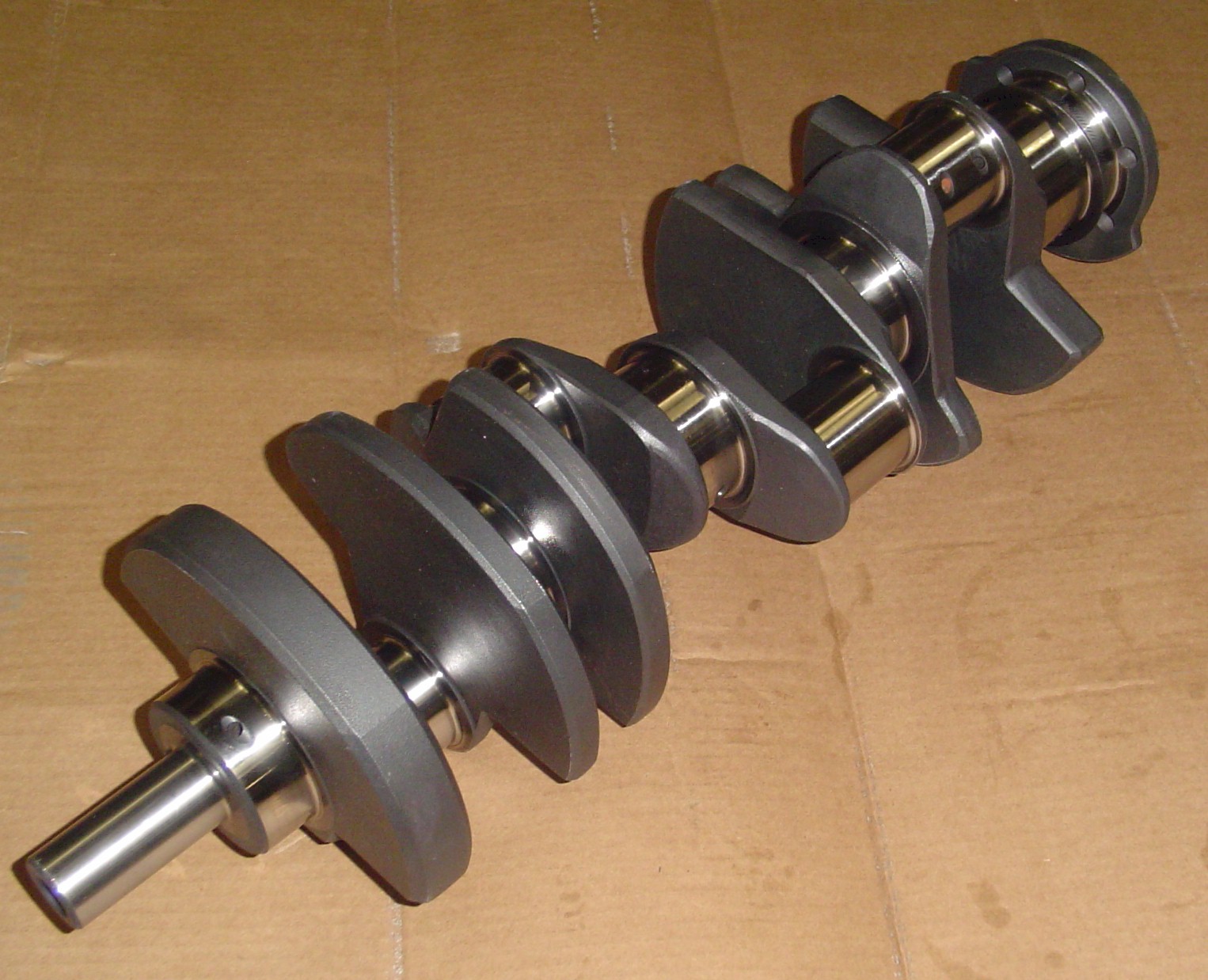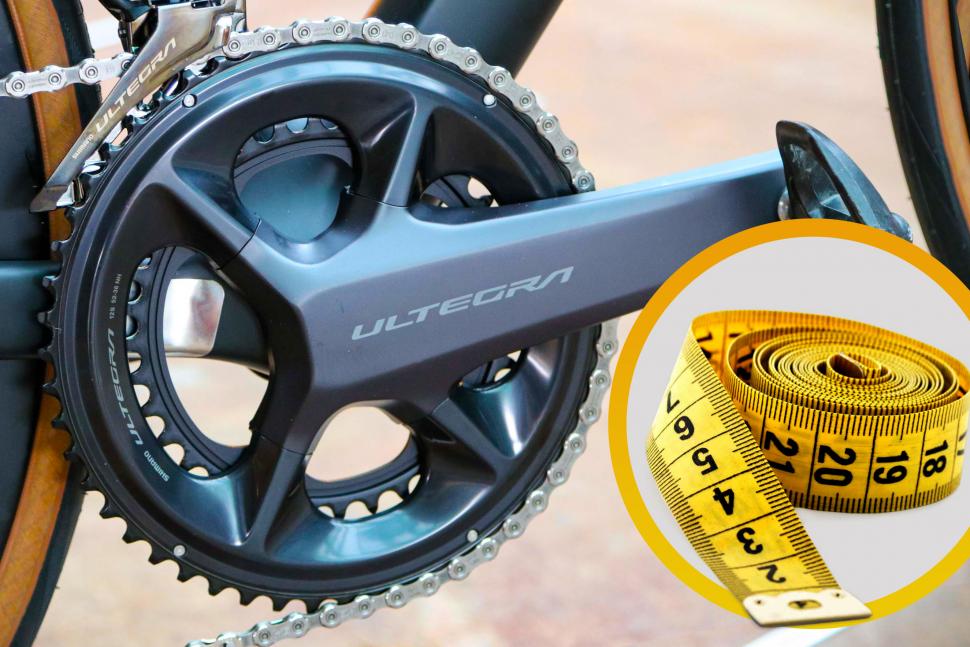Crank Sensor Jeep Cherokee: Your Comprehensive Guide to Diagnosis, Replacement, and Longevity
Crank Sensor Jeep Cherokee: Your Comprehensive Guide to Diagnosis, Replacement, and Longevity jeeps.truckstrend.com
The robust Jeep Cherokee, an icon of off-road capability and practical utility, relies on a complex symphony of sensors and components to deliver its renowned performance. Among the most critical of these is the Crank Sensor, also known as the Crankshaft Position Sensor (CPS). This unassuming yet vital part plays a pivotal role in your Cherokee’s engine management, acting as the primary informant for the engine computer (ECM/PCM) about the crankshaft’s speed and position. Without accurate data from the crank sensor, your Jeep Cherokee simply won’t know when to spark or inject fuel, leading to a frustrating array of starting and running issues. Understanding this sensor, its common failure points, and how to address them is essential for any Cherokee owner looking to maintain their vehicle’s reliability.
What is a Crank Sensor and How Does It Work in Your Jeep Cherokee?
Crank Sensor Jeep Cherokee: Your Comprehensive Guide to Diagnosis, Replacement, and Longevity
At its core, the Crankshaft Position Sensor is an electronic device designed to monitor the rotational speed and exact position of the engine’s crankshaft. In your Jeep Cherokee, this sensor is typically located near the rear of the engine block, often mounted to the bell housing where the engine meets the transmission, or sometimes at the front of the engine near the harmonic balancer.
Here’s how it operates:
- Reluctor Wheel: The crankshaft has a precisely machined "reluctor wheel" (also called a tone ring or target wheel) with teeth or notches.
- Magnetic Field/Hall Effect: As the crankshaft spins, the teeth of the reluctor wheel pass by the stationary crank sensor. Most modern crank sensors use either a magnetic pickup (generating an AC voltage signal) or a Hall effect sensor (generating a digital square wave signal).
- Signal Generation: Each time a tooth passes the sensor, it creates an electrical pulse. The pattern of these pulses, including the gaps (like a missing tooth), allows the sensor to determine not only the crankshaft’s rotational speed (RPM) but also its exact angular position.
- ECM Communication: This precise timing information is then sent to the Engine Control Module (ECM) or Powertrain Control Module (PCM).
- Engine Management: The ECM uses this data, along with information from the Camshaft Position Sensor (which tells it the position of the camshaft, and thus, the valves), to accurately time critical engine functions:

- Fuel Injection: When to open the fuel injectors.
- Ignition Timing: When to fire the spark plugs.
- Valve Timing (if applicable): For variable valve timing systems.

In essence, the crank sensor is the "heartbeat monitor" of your Jeep Cherokee’s engine. Without its accurate readings, the ECM is blind, leading to a complete disruption of the combustion process.
Symptoms of a Failing Crank Sensor in a Jeep Cherokee
A failing crank sensor can manifest in several frustrating and potentially dangerous ways. Recognizing these symptoms early can save you from being stranded.
- Engine Cranks But Won’t Start: This is perhaps the most common and definitive symptom. If the ECM isn’t receiving a signal from the crank sensor, it won’t know when to fire the injectors or spark plugs, preventing the engine from catching.
- Intermittent Stalling: Your Cherokee might suddenly die while driving, especially after warming up, and then may or may not restart immediately. This can be particularly alarming in traffic.
- Rough Idle or Misfires: An inconsistent or weak signal from the CPS can lead to incorrect timing, causing the engine to run roughly, stumble, or misfire. You might feel vibrations or hear unusual noises from the engine.
- Poor Acceleration or Loss of Power: If the ECM is receiving an erratic signal, it may not be able to optimize fuel and ignition timing, resulting in sluggish performance.
- Check Engine Light (CEL) Illumination: The most common diagnostic trouble code (DTC) associated with a faulty crank sensor is P0335 (Crankshaft Position Sensor ‘A’ Circuit Malfunction). Other related codes like P0336, P0337, P0338, and P0339 might also appear.
- Erratic Tachometer Readings: Since the crank sensor provides RPM data, a failing sensor can cause your tachometer to jump erratically or drop to zero while the engine is running.
- Engine Hesitation or Jerking: Under acceleration, the vehicle might hesitate or feel like it’s "jerking" as the ECM struggles to maintain proper timing.

Why Do Crank Sensors Fail?
Like many electronic components in a vehicle, crank sensors are subjected to harsh operating conditions. Common reasons for their failure include:
- Heat Exposure: Located near the engine and transmission, they are constantly exposed to high temperatures, which can degrade internal components over time.
- Vibration: Constant engine vibrations can loosen connections or cause internal sensor damage.
- Electrical Interference: Proximity to other electrical components or damaged wiring can cause signal interference.
- Contamination: Oil leaks, dirt, or road debris can accumulate on the sensor, interfering with its ability to read the reluctor wheel.
- Wire Damage: The wiring harness leading to the sensor can become frayed, corroded, or damaged due to heat or physical stress.
- Age and Wear: Simply put, over years of service, the internal components wear out, leading to eventual failure.
Diagnosing a Faulty Crank Sensor in Your Jeep Cherokee
Before you rush to replace the sensor, proper diagnosis is crucial to ensure it’s the actual culprit.
- Check for DTCs: Use an OBD-II scanner to read any stored codes. P0335 is a strong indicator.
- Visual Inspection: Locate the crank sensor. On most Jeep Cherokees (especially the popular XJ models), it’s at the top of the transmission bell housing, accessible from the top of the engine bay or underneath the vehicle. Inspect the sensor and its wiring harness for any obvious damage, corrosion, or loose connections.
- Multimeter Test (Resistance): Disconnect the sensor’s electrical connector. Use a multimeter to check the sensor’s internal resistance (Ohms). Consult your Cherokee’s service manual for the correct resistance range, as it varies by year and model. A reading outside the specified range indicates a faulty sensor.
- Multimeter Test (AC Voltage – Magnetic Pickups): If your sensor is a magnetic pickup type, set your multimeter to AC voltage. Connect the probes to the sensor’s signal wires (refer to wiring diagrams). Have someone crank the engine (do NOT start it). You should see a small AC voltage reading (e.g., 0.5V to 2.0V AC). No reading or an erratic one suggests a bad sensor.
- Wiggle Test: While the engine is idling (if it can), gently wiggle the wiring harness leading to the sensor. If this causes the engine to stumble or die, it indicates a loose connection or damaged wiring.
Important Note: A failing fuel pump, clogged fuel filter, or faulty ignition coil can sometimes mimic crank sensor symptoms. Always perform thorough diagnostics.
Replacing the Crank Sensor in Your Jeep Cherokee (DIY Guide)
Replacing the crank sensor on a Jeep Cherokee, particularly the XJ generation, is a common DIY task. While accessible, it can be a bit awkward due to its location.
Tools You’ll Need:
- New Crankshaft Position Sensor (ensure it’s the correct one for your year/engine)
- Socket wrench and extensions (often 1/2" or 3/8" drive, with a long extension)
- Sockets (typically 10mm, 11mm, or 13mm for the mounting bolts)
- Flathead screwdriver or pry tool (for clips)
- Dielectric grease (optional, but recommended for electrical connections)
- Safety glasses
- Gloves
- Jack and jack stands (if accessing from underneath)
- Wheel chocks
Step-by-Step Instructions:
- Safety First: Park your Cherokee on a level surface. Engage the parking brake. If you need to raise the vehicle, use a jack and secure it with sturdy jack stands. Chock the wheels. Disconnect the negative terminal of your battery to prevent accidental shorts.
- Locate the Sensor: For most XJ Cherokees, the crank sensor is located on the top of the transmission bell housing, on the driver’s side. It’s often easier to access from underneath the vehicle, looking up between the engine and transmission. Some later models (KJ, KK, KL) might have it in different locations (e.g., front of the engine).
- Disconnect Electrical Connector: Carefully unclip and disconnect the electrical connector from the crank sensor. Be gentle, as old plastic can be brittle.
- Remove Mounting Bolts: Use your socket wrench with appropriate extensions to remove the one or two mounting bolts that secure the sensor to the bell housing. These bolts can be tight and rusty.
- Remove Old Sensor: Once the bolts are out, the sensor should pull straight out. It might be a snug fit due to heat and accumulated debris. A gentle twist or pry might be needed, but be careful not to damage the transmission housing.
- Clean Mounting Surface: Thoroughly clean the mounting hole and surrounding area on the bell housing. Remove any dirt, rust, or old gasket material. This ensures a proper seal and accurate sensor reading.
- Install New Sensor: Apply a small amount of dielectric grease to the new sensor’s electrical connector (optional). Insert the new sensor into the mounting hole, ensuring it’s seated flush.
- Reinstall Mounting Bolts: Thread in the mounting bolts by hand first to avoid cross-threading, then tighten them securely. Do not overtighten, as the housing can be aluminum. Refer to your service manual for torque specifications if available.
- Reconnect Electrical Connector: Firmly plug the electrical connector back into the new sensor until it clicks. Ensure it’s fully seated.
- Route Wiring: Ensure the wiring harness is routed away from hot exhaust components or moving parts.
- Reconnect Battery: Reconnect the negative terminal of your battery.
- Test Drive: Start your Jeep Cherokee. The engine should now start and run smoothly. Take it for a test drive to confirm the symptoms are gone and the Check Engine Light (if present) has cleared or clears after a few drive cycles. You may need to clear the codes with your OBD-II scanner.
Important Tips:
- OEM vs. Aftermarket: While aftermarket sensors are cheaper, many experienced Jeep owners recommend sticking with Original Equipment Manufacturer (OEM) parts (Mopar) or reputable brands like NTK/NGK, Bosch, or Delphi for critical sensors like the CPS. Cheap aftermarket sensors are notorious for premature failure or providing erratic signals.
- Cleanliness: Keep the area clean during installation to prevent debris from entering the transmission housing.
- Patience: The location can be awkward. Take your time, and don’t get frustrated.
Choosing the Right Crank Sensor
When replacing your Crank Sensor, the choice between OEM and aftermarket can be significant.
- OEM (Original Equipment Manufacturer): These are parts supplied by Jeep/Mopar. They are designed to exact specifications and generally offer the best reliability and longevity. They come with a higher price tag.
- Reputable Aftermarket Brands: Brands like NTK/NGK, Bosch, Delphi, Standard Motor Products, and AC Delco often manufacture sensors that meet or exceed OEM specifications. They offer a good balance of quality and cost.
- Budget Aftermarket Brands: While tempting due to low prices, many generic or unbranded sensors can be unreliable, leading to repeat failures or frustrating intermittent issues. It’s often a case of "you get what you pay for" with critical sensors.
Always ensure the sensor is specifically designed for your Jeep Cherokee’s year, model, and engine size. Using the wrong sensor can lead to compatibility issues or incorrect readings.
Preventative Maintenance and Longevity Tips
While crank sensors don’t have a specific maintenance schedule, you can take steps to potentially extend their life:
- Regular Inspections: During routine oil changes or under-hood checks, visually inspect the sensor’s wiring for any signs of fraying, cracking, or damage.
- Address Leaks Promptly: Oil or fluid leaks can contaminate the sensor. Fix any leaks as soon as they are discovered.
- Maintain Cleanliness: Keep your engine bay relatively clean to prevent excessive dirt and grime buildup around electrical components.
- Proper Grounding: Ensure your vehicle’s electrical system has good grounds. Poor grounding can sometimes contribute to sensor issues.
Crank Sensor Jeep Cherokee: Estimated Price Table
Prices for Crank Sensors can vary significantly based on the Jeep Cherokee generation (XJ, KJ, KL), engine type, brand (OEM vs. aftermarket), and retailer. The following table provides estimated ranges for common scenarios.
| Component/Service | Type/Brand Example | Estimated Price Range (USD) | Notes |
|---|---|---|---|
| Crank Sensor | Budget Aftermarket | $20 – $50 | Often lower quality, higher risk of premature failure. |
| Reputable Aftermarket (e.g., NTK, Bosch, Delphi) | $50 – $120 | Good balance of quality and cost. Recommended for DIY. | |
| OEM (Mopar) | $100 – $250 | Highest quality and reliability, but also the most expensive. | |
| Installation Cost | DIY | $0 (Tools extra) | Requires basic mechanical skills and tools. Time: 30 mins – 2 hours (depending on access). |
| Professional Shop | $100 – $300 | Labor rates vary by region and shop. Includes diagnostic time. | |
| Total Estimated Cost | DIY (Aftermarket) | $50 – $120 | Cost of sensor + your time. |
| DIY (OEM) | $100 – $250 | Cost of sensor + your time. | |
| Professional (Aftermarket) | $150 – $420 | Sensor cost + shop labor. | |
| Professional (OEM) | $200 – $550 | Sensor cost + shop labor. |
Disclaimer: These prices are estimates as of early 2024 and are subject to change. Always get quotes from multiple sources and ensure the part is correct for your specific vehicle.
Frequently Asked Questions (FAQ) about the Crank Sensor in a Jeep Cherokee
Q1: Can I drive my Jeep Cherokee with a bad crank sensor?
A1: It is highly NOT recommended. A failing crank sensor can cause your engine to stall unexpectedly, lose power, or simply not start, putting you and others at risk. Get it diagnosed and replaced as soon as symptoms appear.
Q2: How long does a crank sensor typically last in a Jeep Cherokee?
A2: There’s no set lifespan. Many OEM sensors can last over 100,000 miles, but some fail much earlier due to heat, vibration, or manufacturing defects. Aftermarket sensors can be hit or miss.
Q3: Is replacing the crank sensor a difficult DIY job for a Jeep Cherokee?
A3: For the popular XJ Cherokee, it’s considered a moderately easy DIY job. The biggest challenge is often access due to its location on top of the bell housing. Patience and the right extensions are key. Newer Cherokee models (KL) might be more complex.
Q4: What’s the difference between a crankshaft position sensor and a camshaft position sensor?
A4: Both are vital for engine timing. The crankshaft sensor tracks the overall engine speed and crankshaft position. The camshaft sensor tracks the position of the camshaft, which dictates valve timing. The ECM uses both signals in conjunction for precise fuel injection and ignition. A faulty camshaft sensor typically causes rough running or starting issues, but less often a complete no-start.
Q5: Will replacing the crank sensor fix my Check Engine Light?
A5: If the P0335 code (or related crank sensor codes) was the sole issue, replacing the sensor should clear the Check Engine Light after a few drive cycles, or you can clear it manually with an OBD-II scanner.
Conclusion
The Crank Sensor is an unsung hero in your Jeep Cherokee’s engine bay. While small and often overlooked, its accurate functioning is absolutely critical for the vehicle to run reliably. Understanding its role, recognizing the symptoms of failure, and knowing how to diagnose and replace it can save you significant time, money, and frustration. By choosing quality replacement parts and performing the task diligently, you can ensure your beloved Jeep Cherokee continues to deliver its legendary performance for many miles to come. Don’t let a tiny sensor ground your adventure – be informed and be prepared!





